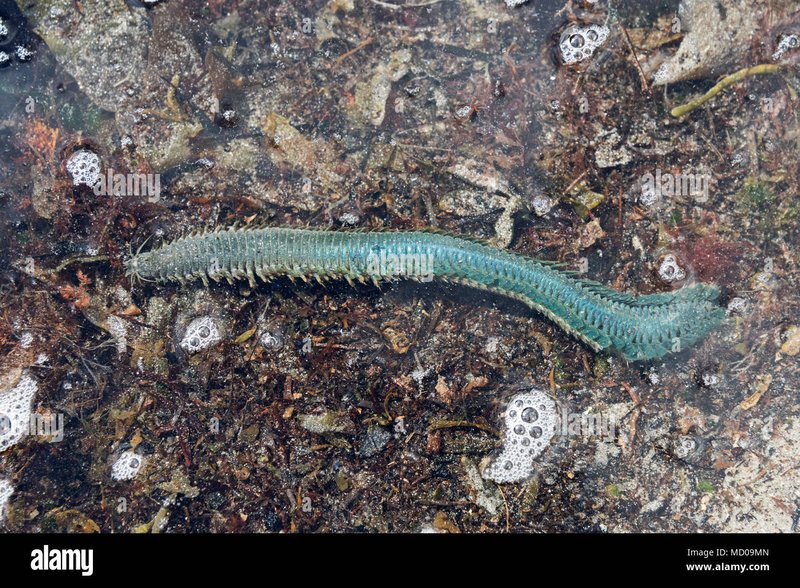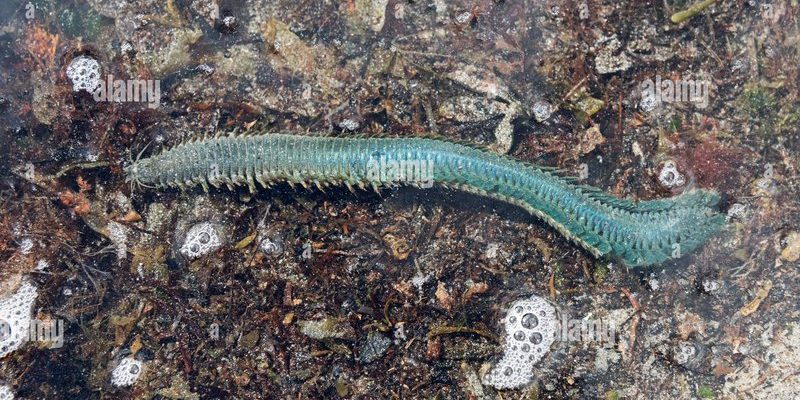
In this article, I’ll explore how Nereis virens serves as an invaluable tool for environmental monitoring and bioindication. We’ll dive into what makes them special, how they can help us track pollution and changes in ecosystems, and why they’re crucial for conservation efforts. Let’s dig deeper!
What is Nereis Virens?
Nereis virens is a type of marine polychaete worm found mainly in sandy or muddy ocean bottoms. They can grow quite large, reaching up to 10 inches long, which makes them pretty impressive for worms! Their segmented bodies and bristly appendages allow them to move through substrate with ease. But their appeal goes beyond their size and appearance.
These worms are part of a larger family of creatures called *polychaetes*, which are known for their unique lifestyles and habitats. Nereis virens lives in burrows, dining on organic matter and detritus, making them essential players in nutrient cycling in coastal ecosystems. Essentially, they not only live in the environment but also help maintain its health by breaking down waste and contributing to the food web.
So, you might be wondering, what’s the big deal about them for environmental monitoring? Well, let’s find out!
The Role of Nereis Virens in Environmental Monitoring
Using Nereis virens for environmental monitoring is like having a natural alarm system for our waterways. These worms are sensitive to changes in their environment, particularly to pollutants like heavy metals, pesticides, and organic compounds. When these substances are introduced into their habitat, Nereis virens can show signs of stress, which researchers can measure to gauge the level of pollution.
It’s fascinating how these creatures respond to environmental changes. For instance, if there’s a spike in a certain toxin in the water, the populations of ragworms may decline sharply. This shift can alert scientists to a problem before it affects larger species higher up the food chain. In this way, they act as bioindicators—organisms that provide insight into the health of their environment.
To facilitate this monitoring, scientists often conduct surveys in areas where Nereis virens thrives. They collect samples to analyze chemical composition and observe any changes in worm populations. This process can be compared to checking the heartbeat of an ecosystem; if the worms are healthy, chances are the environment is too.
How Nereis Virens Indicates Environmental Health
Nereis virens serves as a biological sentinel. That means they can tell us things we cannot measure directly. One way this works is through their bioaccumulation ability. When pollutants enter their bodies, these worms accumulate toxins, which can then be analyzed to assess the pollution levels in their environment.
For example, researchers have found that higher concentrations of heavy metals, like lead or mercury, lead to physiological changes in Nereis virens. These changes can include reduced growth or reproduction rates, which are significant red flags for the health of the surrounding ecosystem. When populations decline or show signs of distress, it’s often a sign that action is needed to address pollution sources.
In addition, scientists utilize these worms to study changes over time. By monitoring the same locations, they can gather data to see how pollution levels fluctuate with seasons, weather patterns, and human activity. It’s a bit like tracking your favorite sports team’s performance throughout a season—the ups and downs can tell you a lot about the bigger picture.
Benefits of Using Nereis Virens for Bioindication
There are several benefits to using Nereis virens as a tool for bioindication. For starters, they are abundant and relatively easy to collect. This accessibility makes them a practical choice for researchers looking to conduct widespread environmental assessments. Their presence in many coastal ecosystems means they can provide valuable data across various geographic locations.
Another major benefit is their cost-effectiveness. Monitoring water quality through traditional methods can be expensive and time-consuming, involving complex machinery and extensive lab work. Using Nereis virens simplifies this process. With just the collection of a few samples, researchers can gain insights into the environmental conditions and potential threats.
Moreover, the information gathered from studying these worms can help inform environmental policies and conservation efforts. By understanding the specific pollutants affecting Nereis virens, policymakers can enact regulations aimed at reducing these threats. In essence, these little worms can contribute to large-scale changes that help protect our ecosystems.
Limitations of Using Nereis Virens
While Nereis virens is a great tool for environmental monitoring, it’s not without its limitations. For one, they may not always reflect the health of the entire ecosystem. Different species can respond differently to pollutants, so relying solely on ragworms could offer an incomplete picture.
Additionally, their sensitivity to environmental changes means that they may also react to natural fluctuations, such as changes in temperature or salinity. This can sometimes lead to false alarms, making it important for researchers to consider multiple indicators when assessing environmental health.
Finally, while these worms are useful, they can be affected by factors such as habitat destruction and climate change. If their environment degrades, you might not find them where they used to thrive. Thus, while Nereis virens is a valuable bioindicator, it should be part of a wider suite of monitoring techniques, helping to ensure a thorough understanding of ecosystem health.
Future Directions in Research
As we continue to face environmental challenges, the role of Nereis virens in monitoring is likely to grow even more important. Researchers are constantly finding new ways to leverage these worms for greater insights. For instance, advancements in genetic analysis may allow scientists to examine the DNA of Nereis virens to detect specific pollutants and toxins more accurately.
Looking ahead, there’s also potential for integrating technology into this monitoring process. Imagine using drones or underwater robots to collect samples from hard-to-reach places—this could revolutionize how we track environmental health. Continued research could also explore how to enhance the resilience of Nereis virens populations, ensuring they remain strong indicators of environmental conditions.
Ultimately, Nereis virens offers a unique lens through which to view our ecosystems, reminding us of the intricate connections between species and their environments. By continuing to study these worms, we can better protect our oceans and, by extension, our planet.
Using Nereis virens for environmental monitoring is a smart, accessible, and effective approach to understanding the health of coastal ecosystems. These small but mighty worms serve as important indicators, alerting us to the changes and challenges our environments face. Their role as bioindicators helps us take proactive measures against pollution, ultimately leading to healthier ecosystems for all.
As we move forward, embracing innovative research, technology, and methods of monitoring will only enhance our ability to protect our natural world. Nereis virens will remain a vital piece of the puzzle in ensuring a sustainable future for marine life and the ecosystems we depend on.

